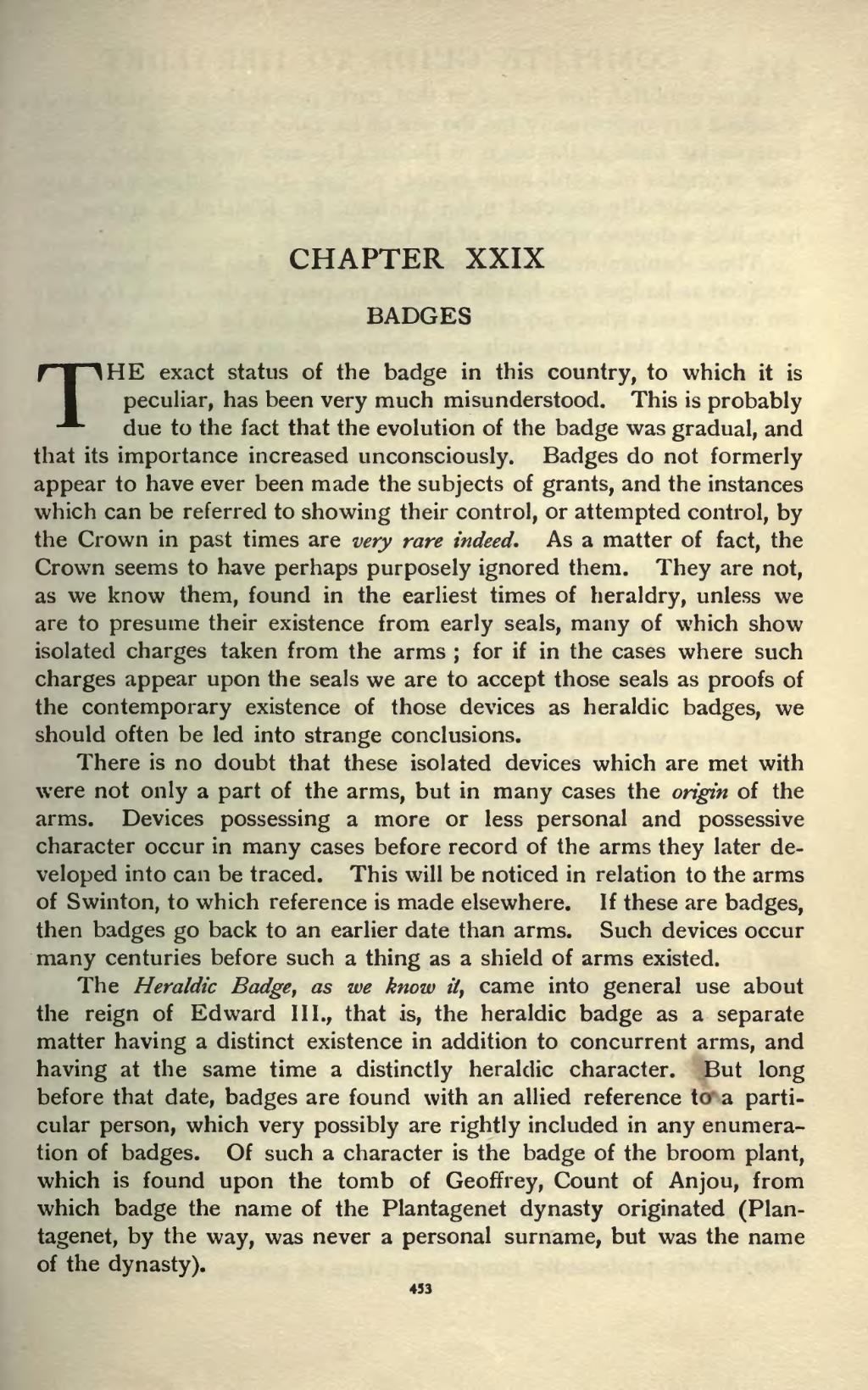CHAPTER XXIX
BADGES
THE exact status of the badge in this country, to which it is peculiar, has been very much misunderstood. This is probably due to the fact that the evolution of the badge was gradual, and that its importance increased unconsciously. Badges do not formerly appear to have ever been made the subjects of grants, and the instances which can be referred to showing their control, or attempted control, by the Crown in past times are very rare indeed. As a matter of fact, the Crown seems to have perhaps purposely ignored them. They are not, as we know them, found in the earliest times of heraldry, unless we are to presume their existence from early seals, many of which show isolated charges taken from the arms; for if in the cases where such charges appear upon the seals we are to accept those seals as proofs of the contemporary existence of those devices as heraldic badges, we should often be led into strange conclusions.
There is no doubt that these isolated devices which are met with were not only a part of the arms, but in many cases the origin of the arms. Devices possessing a more or less personal and possessive character occur in many cases before record of the arms they later developed into can be traced. This will be noticed in relation to the arms of Swinton, to which reference is made elsewhere. If these are badges, then badges go back to an earlier date than arms. Such devices occur many centuries before such a thing as a shield of arms existed.
The Heraldic Badge, as we know it, came into general use about the reign of Edward III., that is, the heraldic badge as a separate matter having a distinct existence in addition to concurrent arms, and having at the same time a distinctly heraldic character. But long before that date, badges are found with an allied reference to a particular person, which very possibly are rightly included in any enumeration of badges. Of such a character is the badge of the broom plant, which is found upon the tomb of Geoffrey, Count of Anjou, from which badge the name of the Plantagenet dynasty originated (Plantagenet, by the way, was never a personal surname, but was the name of the dynasty).
